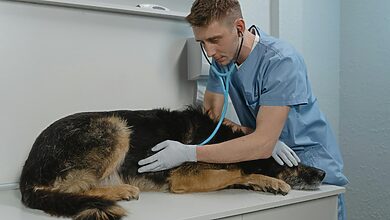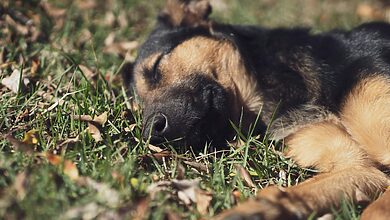10 Best Dog Food Products: A Comprehensive Guide to Canine Nutrition

Welcoming a canine companion into your life is a joyous experience, and ensuring they receive the right nutrition is paramount for their health and happiness. This comprehensive guide explores the intricacies of feeding your furry friend, covering everything from choosing the10 best dog food products to addressing common feeding challenges.
Choosing the Right Dog Food
Choosing the right dog food is crucial for your furry friend’s health, happiness, and overall well-being. Here’s a curated list of the 10 best dog food products that prioritize quality ingredients, balanced nutrition, and cater to various dietary needs.

Hill’s Science Diet Adult Dog Food:
- Key Features: Supports overall health, contains real chicken, and includes essential nutrients for a strong immune system.
- Why It Stands Out: Recommended by veterinarians, this formula provides a balanced diet for adult dogs.
Blue Buffalo Life Protection Formula:
- Key Features: High-quality protein sources, real meat as the first ingredient, and a blend of antioxidants.
- Why It Stands Out: Designed to support the immune system and promote a healthy coat and skin.
Royal Canin Veterinary Diet Gastrointestinal Dog Food:
- Key Features: Specifically formulated for dogs with sensitive stomachs or digestive issues.
- Why It Stands Out: A prescription-grade option for those requiring specialized nutrition.
Purina Pro Plan Savor Shredded Blend:
- Key Features: Real meat as the primary ingredient, with a mix of crunchy kibble and tender shredded pieces.
- Why It Stands Out: Offers a variety of textures for a palatable dining experience.
Wellness CORE Grain-Free Dog Food:
- Key Features: Grain-free, high-protein formula with a blend of premium ingredients.
- Why It Stands Out: Ideal for dogs with grain sensitivities, promoting overall health and vitality.
CANIDAE All Life Stages Dog Food:
- Key Features: Suitable for all life stages, featuring real meat, whole grains, and probiotics.
- Why It Stands Out: A versatile option that can accommodate the nutritional needs of dogs at any age.
Merrick Grain-Free Real Salmon & Sweet Potato Recipe:
- Key Features: Grain-free formula with real deboned salmon as the main ingredient.
- Why It Stands Out: Rich in omega fatty acids, promoting a healthy coat and skin.
Iams ProActive Health Adult MiniChunks:
- Key Features: Tailored for small and medium-sized breeds, providing a balance of nutrients.
- Why It Stands Out: Supports energy and vitality in smaller dogs with smaller kibble sizes.
Nutro Ultra Grain-Free Dog Food:
- Key Features: Grain-free and crafted with a trio of proteins from chicken, lamb, and salmon.
- Why It Stands Out: A nutrient-dense option for promoting lean muscles and a healthy heart.
Rachael Ray Nutrish Natural Dry Dog Food:
- Key Features: Real meat as the main ingredient, with added vitamins and minerals.
- Why It Stands Out: Formulated with simple, natural ingredients, catering to dogs with sensitivities.
When selecting the best dog food for your furry companion, consider factors such as their age, size, breed, and any specific health concerns. Always consult with your veterinarian to ensure you choose a product that aligns with your dog’s unique nutritional needs.

Types of Dog Food
Dry Kibble: Dry kibble is a popular and convenient choice. It’s cost-effective, has a long shelf life, and supports dental health by promoting chewing.
Wet Food: Wet food, with its higher moisture content, is beneficial for hydration, especially for dogs prone to urinary issues. It’s often more palatable for picky eaters.
Raw Food: A raw diet mimics a dog’s ancestral eating habits, providing potential benefits like improved coat condition, increased energy, and better dental health. However, careful handling is crucial to prevent bacterial contamination.
Homemade Food: Creating homemade meals allows for customization based on your dog’s preferences and dietary needs. It requires a balanced approach, ensuring essential nutrients are included.
Factors to Consider
Age: Puppies, adults, and older pet have varying nutritional needs. Diets should support growth, maintenance, or address aging concerns accordingly.
Breed: Different breeds may have specific dietary requirements. Larger breeds, for instance, might benefit from diets promoting joint health.
Activity Level: Active dogs burn more calories. Adjusting their diet to match their energy expenditure ensures they receive the necessary nutrients.
Health Conditions: Specific health conditions may require specialized diets. Consult with your veterinarian for guidance on managing conditions through nutrition.
Reading Food Labels: Understanding food labels is crucial for making informed choices. Look for named protein sources, avoid artificial additives and fillers, and ensure a balance of essential nutrients.
Establishing a Healthy Feeding Schedule
How Often to Feed Your Dog:
- Puppies: Generally require three to four meals a day.
- Adults: Typically fed twice a day.
- Older: May benefit from smaller, more frequent meals.
Portion Sizes for Different Dogs: Adjust portion sizes based on factors like size, age, and activity level. Regularly monitor your dog’s weight to ensure they maintain a healthy balance.
Feeding Times and Routines: Dogs thrive on routine. Establish regular feeding times in a quiet environment to create a positive association with mealtime.
Adjusting Feeding Schedule Based on Needs: Life changes, health conditions, and age-related adjustments may necessitate changes in the feeding schedule. Be adaptable to ensure your dog’s evolving needs are met.

Providing Clean Water
Importance of Fresh Water for Dogs: Water is vital for bodily functions, temperature regulation, and overall health. Ensure a constant supply of fresh water, especially in warmer weather.
Choosing the Right Water Bowl: Opt for stainless steel or ceramic bowls to avoid potential allergens from plastic. Regularly clean and disinfect bowls to prevent bacterial growth.
Cleaning and Maintaining Water Bowls: Daily washing and disinfecting prevent bacteria buildup. Inspect bowls for wear and tear, replacing them if needed.
Signs of Dehydration in Dogs: Dry gums, lethargy, and sunken eyes are signs of dehydration. If noticed, seek veterinary attention promptly.
Supplementing Your Dog’s Diet:
Benefits of Using Supplements: Supplements can support joint health, coat condition, and address specific health needs. However, consult your vet to avoid unnecessary or excessive supplementation.
Types of Supplements Available: Common supplements include Omega-3 fatty acids, glucosamine, and multivitamins. Choose supplements based on your dog’s individual requirements.
Choosing the Right Supplements for Your Dog: Consider factors like age, breed, and health status when selecting supplements. Always consult your veterinarian for personalized recommendations.
Working with Your Veterinarian: Regular vet check-ups are crucial to assess your dog’s dietary needs. Discuss any observed changes in behavior or health promptly.
Addressing Common Feeding Challenges:
Dealing with Picky Eaters: Gradual transitions, offering variety, and maintaining consistency can help overcome picky eating habits. If the refusal persists, consult your veterinarian.
Managing Weight Gain or Loss: Adjust portion sizes, monitor treats, and follow vet recommendations for a tailored weight management plan.
Food Allergies and Sensitivities: Observe symptoms like itching, vomiting, or diarrhea. Conduct elimination trials under vet guidance to identify allergens.
Digestive Issues and Dietary Adjustments: Introduce fiber gradually and consider specialized diets under vet supervision for chronic digestive concerns.

Nutrition for Your Dog:
Nutritional Needs of Dogs at Different Life Stages:
- Puppies: Need diets supporting growth and development.
- Adults: Require balanced nutrition for maintenance.
- Older: Benefit from diets addressing aging concerns.
Importance of Balanced Nutrition for Overall Health: Balanced nutrition plays a key role in energy, immunity, and disease prevention. Consult your vet for personalized nutritional plans.
Understanding Essential Nutrients for Dogs:
Protein, Carbohydrates, Fats, Vitamins, Minerals: A balanced combination of these nutrients is crucial for your dog’s health. Read labels to identify nutrient sources.
Reading Dog Food Labels and Interpreting Nutritional Information: Understand the AAFCO statement, guaranteed analysis, and ingredient list. Look for named protein sources and avoid harmful additives.
Avoiding Harmful Ingredients in Dog Food: Identify common allergens and fillers. Opt for foods with named protein sources and minimal artificial additives.
Working with a Veterinarian to Create a Personalized Nutrition Plan for Your Dog: Vet input ensures a tailored approach to your dog’s nutrition. Regular adjustments can be made based on changes in health or lifestyle.
Feeding Tips and Best Practices:
Transitioning Your Dog to a New Food: Gradual transitions over a week help avoid digestive issues. Seek vet advice for sensitive dogs.
Storing Dog Food Properly: Use airtight containers, store in a cool, dry place, and check expiration dates regularly.
Traveling with Your Dog and Feeding Considerations: Maintain routine, bring familiar food, and prioritize hydration during travel.
Eating Habits to Encourage in Your Dog: Encourage slow eating with puzzle feeders, and monitor for signs of dental issues.
Signs That Your Dog May Need a Change in Diet: Dull coat, digestive issues, or changes in behavior may indicate a need for dietary adjustments. Consult your vet for an assessment.

Specific Dietary Needs:
Feeding Dogs with Allergies or Sensitivities: Identify allergens through elimination trials and choose hypoallergenic diets under vet guidance.
Dietary Considerations for Dogs with Medical Conditions: Consult your vet for specialized diets tailored to manage specific medical conditions. Regular monitoring is essential.
Homemade Dog Food Recipes and Tips: Balancing proteins, carbs, and fats is crucial. Include safe ingredients and avoid harmful foods. Consult your vet for recipe recommendations.
Raw Feeding for Dogs:
Benefits and Risks: Benefits include improved coat condition and energy levels. Risks involve potential bacterial contamination. Consult your vet for guidance.
Vegan and Vegetarian Diets for Dogs: Controversial and requires careful planning to ensure nutritional adequacy. Consult your vet before introducing such diets.
Additional Resources:
American Kennel Club: Dog Nutrition Guide:
A reliable source offering information on nutrition and breed-specific needs. Guidelines for different life stages are provided.
Association of American Feed Control Officials (AAFCO):
Ensures pet food meets nutritional standards. Understanding AAFCO statements on labels helps make informed choices.
National Research Council Dog Nutrient Requirements:
In-depth insights into canine nutritional needs. A valuable resource for creating balanced and nutritious diets for your furry friend.Navigating the world of canine nutrition is a rewarding journey. By understanding your dog’s unique needs and making informed choices, you ensure they lead a healthy, happy, and fulfilling life.
Frequently Asked Questions (FAQ) About Canine Nutrition
Q1: How much should I feed my dog?
A: The recommended feeding amount varies based on factors such as your dog’s size, age, activity level, and the specific brand of dog food. Check the packaging for guidelines, and consult your veterinarian for personalized recommendations.
Q2: What is the best type of dog food – dry, wet, or raw?
A: The best type of dog food depends on your dog’s preferences, dietary needs, and your lifestyle. Dry kibble is convenient, wet food can be more palatable, and raw food mimics a dog’s ancestral diet. Consult your vet to determine the most suitable option.
Q3: How often should I feed my dog?
A: Puppies usually require more frequent meals (3-4 times a day), while adults can be fed twice a day. Senior dogs might benefit from smaller, more frequent meals. Establish a consistent feeding schedule and monitor your dog’s weight.
Q4: Can I switch my dog’s food, and how should I do it?
A: Yes, you can switch your dog’s food gradually over 7-10 days to avoid digestive upset. Mix the new food with the old in increasing proportions. If your dog has dietary sensitivities, consult your vet for a specialized transition plan.
Q5: What should I do if my dog is a picky eater?
A: Picky eating can be addressed by offering a variety of flavors, maintaining a consistent feeding schedule, and gradually introducing new foods. If the issue persists, consult your vet to rule out underlying health concerns.
Q6: Are homemade diets safe for dogs?
A: Homemade diets can be safe if they are well-balanced and meet your dog’s nutritional needs. Consult your vet to ensure the diet provides the right mix of proteins, carbohydrates, and fats, as well as essential vitamins and minerals.
Q7: Can I give my dog human food as treats?
A: Some human foods are safe as treats, such as plain cooked meats and vegetables. However, avoid foods toxic to dogs, like chocolate and onions. Always check with your vet before introducing new treats to your dog’s diet.
Q8: How do I know if my dog has food allergies?
A: Signs of food allergies include itching, vomiting, diarrhea, or skin issues. If you suspect your dog has food allergies, consult your vet. They may recommend an elimination diet to identify the problematic ingredient.
Q9: Should I give my dog supplements?
A: It depends on your dog’s individual needs. While a balanced diet should provide essential nutrients, some dogs may benefit from supplements. Consult your vet before introducing any supplements to ensure they are safe and necessary.
Q10: How can I tell if my dog is higherweight or underweight?
A: Feel your dog’s ribs. They should be easily felt with a slight covering of fat. An higherweight dog will have difficulty feeling the ribs, while an underweight dog’s ribs will be too prominent. Consult your vet for advice on managing your dog’s weight.
Remember, these answers are general guidelines, and your dog’s specific needs may vary. Always consult with your veterinarian for personalized advice tailored to your dog’s unique characteristics and health status.








